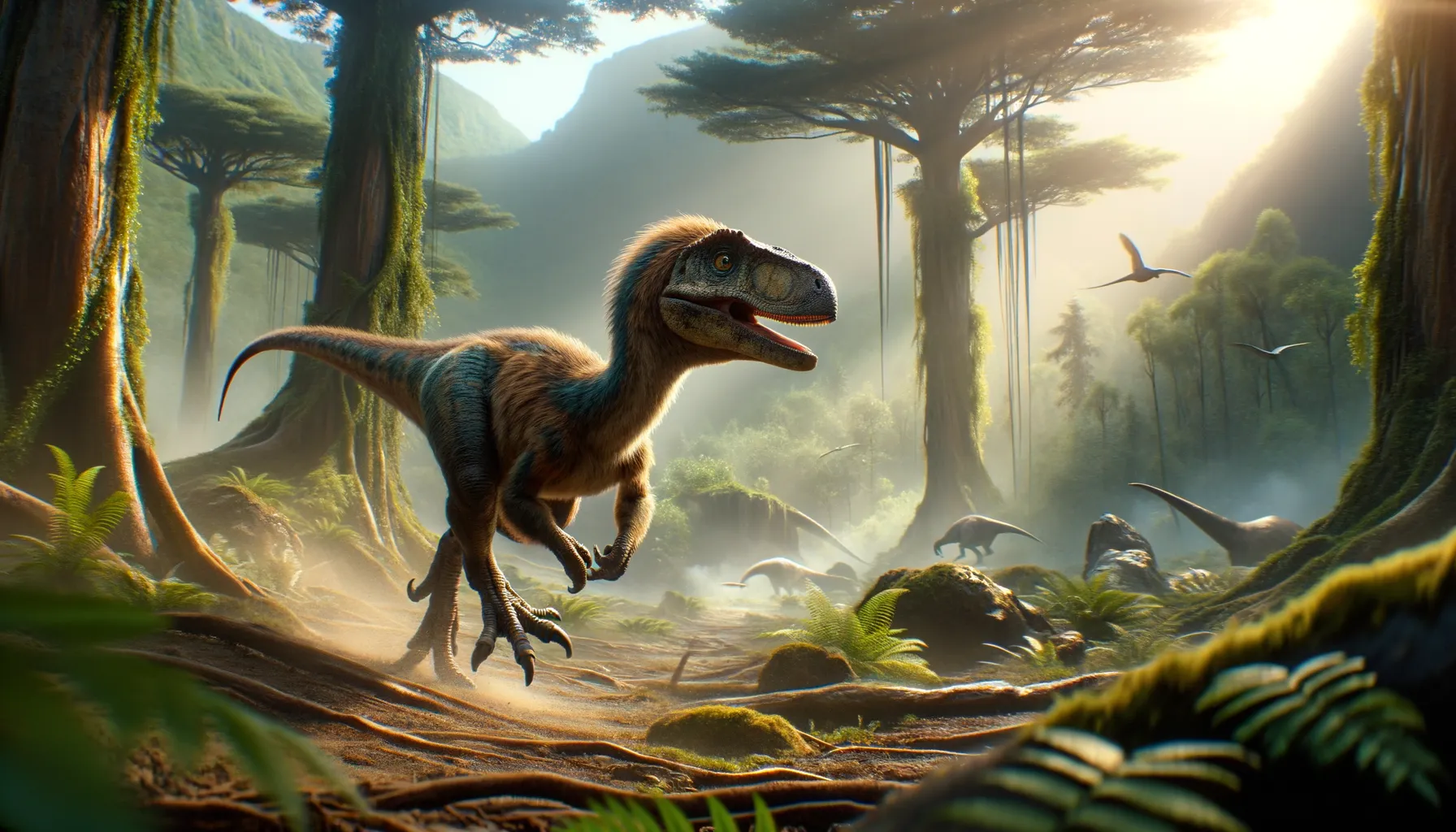
Mahakala_omnogovae
Tiny but mighty in the age of giants!
Period
Cretaceous
Length
Approximately 70 centimeters long.
Height
About the size of a modern-day chicken.
Weight
Estimated to weigh around 1 kilogram.
Mahakala omnogovae was a small, bird-like dinosaur that lived during the late Cretaceous period. Known from fossils found in Mongolia, it provides crucial insights into the early evolution of birds. Its compact size and physical features suggest it was agile and quick, aiding in its survival in a challenging environment. As a member of the Dromaeosauridae family, Mahakala contributes to our understanding of the link between dinosaurs and birds.
Diet
Mahakala was likely a carnivore, feeding on small animals. It might have hunted insects, mammals, and smaller reptiles, utilizing its agility to catch prey.
Hunting
Hunting behavior likely involved quick, agile movements through its environment to capture unsuspecting prey. Its size suggests it may have relied on stealth and speed rather than strength.
Environmental challenges
Living in the harsh conditions of the Late Cretaceous Mongolia, Mahakala faced environmental challenges including temperature fluctuations and potentially scarce food resources. The varied landscape of deserts and forests required adaptability to different ecological niches. These conditions may have driven its evolutionary development towards greater agility and resourcefulness.
Speed
Mahakala omnogovae was likely a nimble creature due to its small size.
Lifespan
Its lifespan was typical of small theropods, possibly 5-10 years.
First discovery
Discovered in 2007 in the Gobi Desert, Mongolia.
Fun Facts
- Mahakala omnogovae was a small, feathered dinosaur that lived around 80 million years ago during the Late Cretaceous period.
- This dinosaur was discovered in the Gobi Desert in Mongolia, named after the Buddhist deity Mahakala.
- Despite its small size, similar to a crow, Mahakala omnogovae provides important insights into the evolution of flight in dinosaurs.
- It is considered a member of the group of theropods closely related to birds.
- Mahakala omnogovae's discovery highlighted the shrinking size of some dinosaur lineages, which might have paved the way for the evolution of birds.
- Its fossils suggest that even early dromaeosaurs were experimenting with feathered wings, although they were not capable of powered flight.
- Mahakala omnogovae helped scientists understand more about the diversity and specialization among small theropod dinosaurs.
Growth and Development
Mahakala likely hatched from eggs and underwent rapid growth, as is typical for smaller theropods. Its development involved significant changes in body structure as it matured. Fossils suggest that it maintained a lightweight build throughout its lifespan, optimizing it for speed and agility.
Habitat
Mahakala inhabited areas that may have included semi-arid regions with scattered vegetation. The Gobi Desert, its primary fossil location, suggests it was adapted to dry climates. Its habitat would require it to be resilient and opportunistic in finding resources.
Interaction with other species
As a small dinosaur, Mahakala likely faced threats from larger predators and engaged in competition with other small carnivores for food. It might have utilized its speed to evade larger threats and exploit its niche effectively. Its role in the ecosystem would have been as both predator and prey.
Natural lifespan
Its natural lifespan could extend up to a decade under optimal conditions.
Reproduction
Mahakala likely reproduced by laying eggs, similar to modern birds and other dinosaurs. Nesting behavior may have involved constructing simple nests on the ground. Parental care is a possibility, aiding in the survival of the young despite environmental challenges.
Social behaviour
This dinosaur might have lived solitarily or in small groups, depending on resource availability. Social interactions could have included cooperative hunting or territorial displays among individuals. Its social structure remains speculative due to limited evidence.
Fossil locations
The primary location for Mahakala fossils is the Gobi Desert in Mongolia. This region is renowned for its rich deposits of Late Cretaceous dinosaur remains. These findings are essential for understanding the evolutionary history of theropods.
